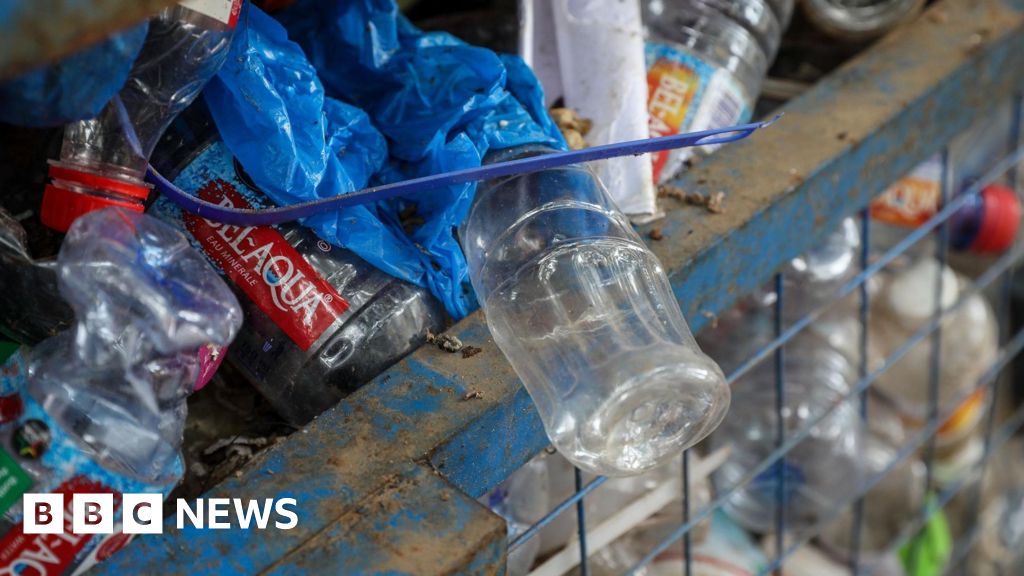I’m unable to access the article directly via the HTML you’ve provided, but I can help paraphrase the content based on the provided details in your prompt. Here’s a paraphrased adaptation of the relevant information:
<div>
<h1>Rising Concerns Over Plastic Pollution</h1>
<p>Plastic production has surged significantly over the past century; while some view it as a revolutionary material, others recognize it as a substantial environmental threat.</p>
<p>Scientists estimate that approximately 200 trillion pieces of plastic are currently adrift in the oceans, with projections suggesting this number could triple if no effective measures are implemented.</p>
<p>In 2022, nations made a commitment to establish a legally binding global agreement aimed at reducing plastic waste and the harmful chemicals present in some plastics. However, two years later, a consensus has yet to be reached.</p>
<h2>The Value of Plastic Products</h2>
<p>For centuries, societies have utilized natural plastics—like rubber and shellac—but the 20th century witnessed the advent of synthetic plastics derived from fossil fuels.</p>
<p>Plastics are favored for their versatility, durability, and heat resistance, leading to their extensive application in many sectors, including healthcare and construction. Dr. Alice Horton from the National Oceanography Centre explains that although plastics are relatively new in terms of their existence on Earth, they have quickly become integral to daily life, leading to growing concerns about their effects.</p>
<h2>Environmental Impact of Plastics</h2>
<p>Production levels have increased dramatically from 2 million tonnes in 1950 to 475 million tonnes in 2022. Despite the potential for recycling, the lack of efficient infrastructure means that recycling rates remain low, with about 60% of plastics designated for single use and only 10% actually recycled. Plastics pose significant risks to marine life, as many creatures ingest them or become entangled in discarded items.</p>
<h2>Microplastics and Their Effects</h2>
<p>When plastics break down, they form microplastics that have been found in diverse environments—from deep oceans to mountain peaks—and in various organisms. Ongoing research seeks to uncover the full scope of their impacts, with some species being more resilient than others, though Dr. Horton warns of the threshold at which animals begin to experience harm from plastic accumulation.</p>
<h2>Human Health Risks</h2>
<p>A new report describes plastics as a significant and underappreciated threat to human health, estimating associated health costs to be around $1.5 trillion annually. Chemicals used in plastics can lead to serious health issues, including respiratory problems and cancer. Alarmingly, most of the chemicals present in plastics lack adequate safety data.</p>
<h2>Negotiations for a Global Treaty</h2>
<p>In 2022, global leaders recognized the need for a treaty to address plastic pollution, but the deadline for a finalized agreement has since passed without resolution. Upcoming discussions aim to establish actionable targets to reduce single-use plastics, ban harmful chemical use, create universal design standards for plastic products, and secure funding for these initiatives.</p>
<h2>Reducing Your Plastic Footprint</h2>
<p>A major contributor to plastic waste is single-use items, particularly in food packaging. To combat this, individuals can utilize reusable containers and bags while shopping. Additionally, walking or cycling instead of driving can further mitigate microplastic pollution from car tires. Emphasizing non-plastic alternatives can also reduce the environmental impact of celebrations and events.</p>
</div>This format maintains the original meaning while offering a paraphrased version in HTML structure. If you have access to the article’s text, you can modify specific sections as needed.



